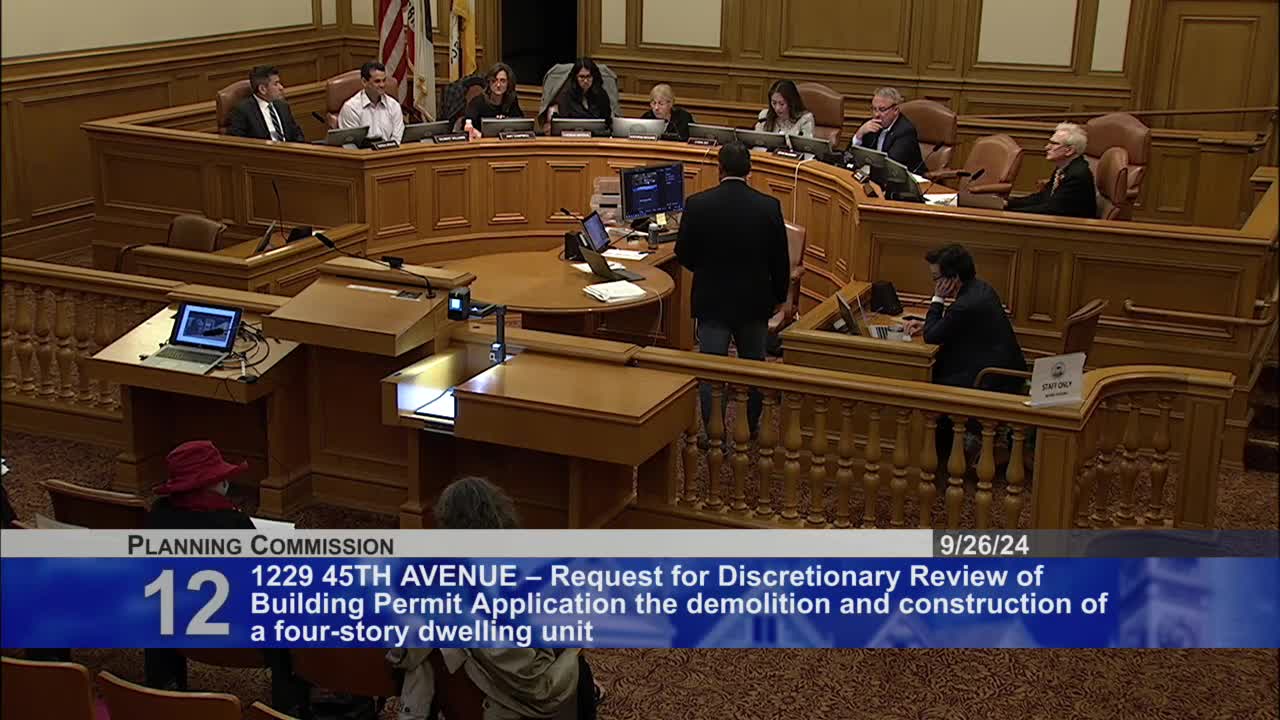Concerns Rise Over Health Hazards in Housing Development
September 26, 2024 | San Francisco County, California
This article was created by AI summarizing key points discussed. AI makes mistakes, so for full details and context, please refer to the video of the full meeting. Please report any errors so we can fix them. Report an error »

In a recent government meeting, significant discussions emerged regarding a proposed development project that includes sensitive infill housing and an accessory dwelling unit (ADU) application. Concerns were raised about the potential health hazards posed by existing rear buildings on the property, which were described as uninhabitable and possibly infested with mold and insects. The architect, Mr. Morris, faced scrutiny over the lack of clarity regarding the rehabilitation plans for these structures, leading to uncertainty about their status as primary residences necessary for the ADU application.
The meeting highlighted the importance of ensuring that any development does not compromise the health and safety standards of the surrounding community. One member expressed discomfort with the idea of approving the project without definitive plans for the rear buildings, emphasizing the need for certainty before moving forward.
Additionally, the impact of the proposed development on neighboring properties was a focal point of discussion. Concerns were specifically raised about the potential loss of natural light for a neighboring doctor's dining room, which could significantly affect the quality of life for long-term residents. The planning department acknowledged these concerns and proposed solutions to enhance light access while maintaining necessary passageways for the development.
Overall, the meeting underscored the delicate balance between new housing developments and the preservation of community health and well-being, as stakeholders navigated the complexities of urban planning and resident rights.
The meeting highlighted the importance of ensuring that any development does not compromise the health and safety standards of the surrounding community. One member expressed discomfort with the idea of approving the project without definitive plans for the rear buildings, emphasizing the need for certainty before moving forward.
Additionally, the impact of the proposed development on neighboring properties was a focal point of discussion. Concerns were specifically raised about the potential loss of natural light for a neighboring doctor's dining room, which could significantly affect the quality of life for long-term residents. The planning department acknowledged these concerns and proposed solutions to enhance light access while maintaining necessary passageways for the development.
Overall, the meeting underscored the delicate balance between new housing developments and the preservation of community health and well-being, as stakeholders navigated the complexities of urban planning and resident rights.
View full meeting
This article is based on a recent meeting—watch the full video and explore the complete transcript for deeper insights into the discussion.
View full meeting
